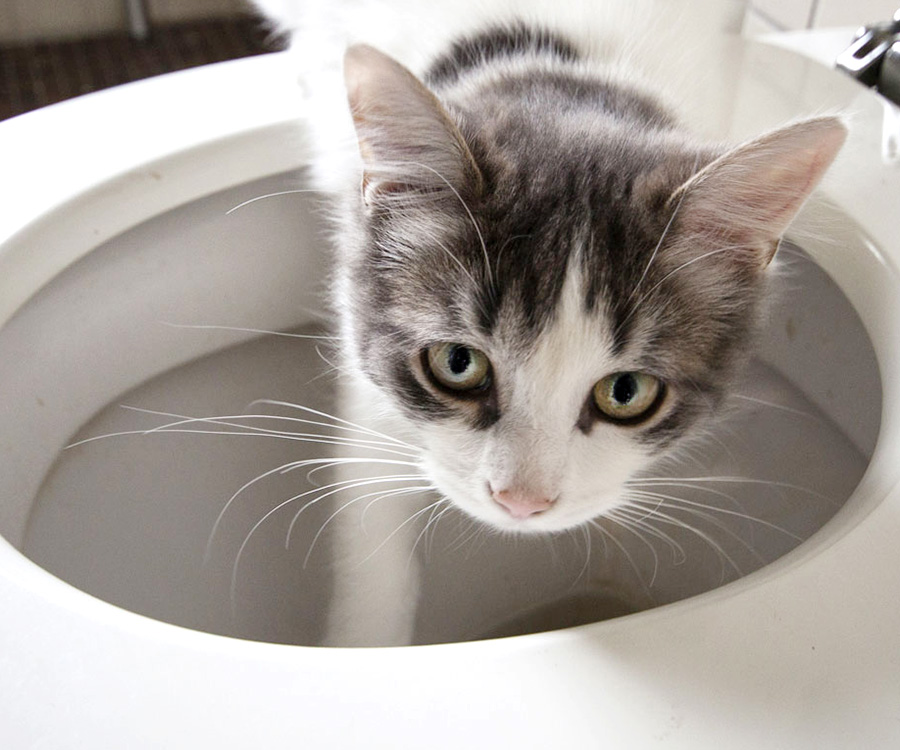Avoid Toilet Disasters: Don't Flush Cat Poop Down Your Toilet - Professional Advice
Avoid Toilet Disasters: Don't Flush Cat Poop Down Your Toilet - Professional Advice
Blog Article
We've unearthed the article on How to Dispose of Cat Poop and Litter Without Plastic Bags below on the web and decided it made sense to share it with you on my blog.

Introduction
As cat proprietors, it's vital to be mindful of how we dispose of our feline good friends' waste. While it might seem convenient to purge feline poop down the commode, this method can have detrimental repercussions for both the setting and human health.
Ecological Impact
Purging feline poop introduces harmful microorganisms and bloodsuckers right into the water supply, positioning a considerable threat to marine communities. These pollutants can negatively influence aquatic life and concession water top quality.
Wellness Risks
Along with ecological worries, purging feline waste can likewise position health risks to human beings. Pet cat feces might include Toxoplasma gondii, a parasite that can create toxoplasmosis-- a possibly serious illness, especially for expecting women and individuals with weakened body immune systems.
Alternatives to Flushing
The good news is, there are much safer and much more liable methods to get rid of pet cat poop. Think about the complying with alternatives:
1. Scoop and Dispose in Trash
The most usual method of disposing of pet cat poop is to scoop it into a naturally degradable bag and toss it in the trash. Be sure to use a devoted trash inside story and dispose of the waste quickly.
2. Usage Biodegradable Litter
Opt for biodegradable cat trash made from materials such as corn or wheat. These trashes are eco-friendly and can be securely taken care of in the garbage.
3. Bury in the Yard
If you have a backyard, take into consideration hiding cat waste in a designated area far from veggie gardens and water sources. Be sure to dig deep adequate to stop contamination of groundwater.
4. Mount a Pet Waste Disposal System
Invest in a family pet waste disposal system specifically created for cat waste. These systems utilize enzymes to break down the waste, reducing odor and environmental influence.
Verdict
Responsible pet ownership expands beyond supplying food and sanctuary-- it also includes correct waste monitoring. By avoiding flushing pet cat poop down the toilet and choosing alternate disposal techniques, we can lessen our ecological impact and shield human health.
Why Can’t I Flush Cat Poop?
It Spreads a Parasite
Cats are frequently infected with a parasite called toxoplasma gondii. The parasite causes an infection called toxoplasmosis. It is usually harmless to cats. The parasite only uses cat poop as a host for its eggs. Otherwise, the cat’s immune system usually keeps the infection at low enough levels to maintain its own health. But it does not stop the develop of eggs. These eggs are tiny and surprisingly tough. They may survive for a year before they begin to grow. But that’s the problem.
Our wastewater system is not designed to deal with toxoplasmosis eggs. Instead, most eggs will flush from your toilet into sewers and wastewater management plants. After the sewage is treated for many other harmful things in it, it is typically released into local rivers, lakes, or oceans. Here, the toxoplasmosis eggs can find new hosts, including starfish, crabs, otters, and many other wildlife. For many, this is a significant risk to their health. Toxoplasmosis can also end up infecting water sources that are important for agriculture, which means our deer, pigs, and sheep can get infected too.
Is There Risk to Humans?
There can be a risk to human life from flushing cat poop down the toilet. If you do so, the parasites from your cat’s poop can end up in shellfish, game animals, or livestock. If this meat is then served raw or undercooked, the people who eat it can get sick.
In fact, according to the CDC, 40 million people in the United States are infected with toxoplasma gondii. They get it from exposure to infected seafood, or from some kind of cat poop contamination, like drinking from a stream that is contaminated or touching anything that has come into contact with cat poop. That includes just cleaning a cat litter box.
Most people who get infected with these parasites will not develop any symptoms. However, for pregnant women or for those with compromised immune systems, the parasite can cause severe health problems.
How to Handle Cat Poop
The best way to handle cat poop is actually to clean the box more often. The eggs that the parasite sheds will not become active until one to five days after the cat poops. That means that if you clean daily, you’re much less likely to come into direct contact with infectious eggs.
That said, always dispose of cat poop in the garbage and not down the toilet. Wash your hands before and after you clean the litter box, and bring the bag of poop right outside to your garbage bins.
https://trenchlesssolutionsusa.com/why-cant-i-flush-cat-poop/

I recently found that review about How to Dispose of Cat Poop and Litter Without Plastic Bags when doing a search on the web. Please set aside a second to distribute this page if you enjoyed reading it. Thanks a bunch for your time. Come back soon.
This Website Report this page